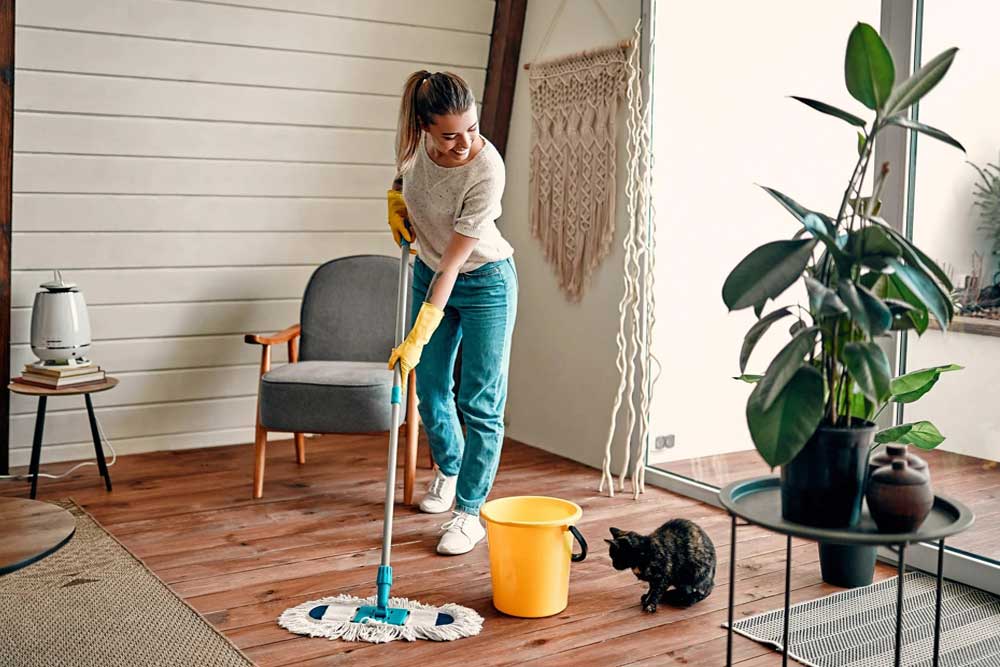To the unfortunate people who are prone to allergies, carpets are prime sources of dust mites, pollen, and pet dander.
Symptoms such as sneezing and itchy eyes can get much worse in the long run. However, there are ways of preventing this without instigating unwanted reactions.
A clean carpet makes your house healthier. This guide will provide practical methods to reduce allergens in your carpet and improve air quality, so read on!
How Do Carpets Make Allergy Symptoms Worse?
It’s crucial to know why carpets cause such trouble for those with allergies before looking at fixes. Think of carpets as large sponges. They collect pollen and even mould spores deep inside their fabrics.
These allergens are expelled back into the air as foot traffic goes over the carpet, triggering symptoms.
Vacuuming is not usually enough. In fact, it can actually push these tiny particles deep into the carpet, so standard vacuums exacerbate the problem even further.
During allergy season, carpets especially cause problems since they trap pollen imported from outside.
For pet owners, dander always ends up on carpets regardless of how often you groom their furry friends or use a vacuum cleaner.
1.Vacuum Often Using a Hepa Filter
People with allergies must always vacuum. The thing is that not all hoovers work the same way. Older machines can force microscopic dust particles back into the air, aggravating your sensitivities even more.
Instead, consider using a hoover with a HEPA filter. These additions remove up to 99.97% of pollen and other allergens.
Ensure that you vacuum two to three times a week and remember not to do a single pass only. Make sure to pass by high-traffic areas a few times to guarantee that you’re removing as many particles as possible.
Investing in a hoover with a motorised brush head can help you better remove deeply ingrained allergens.
2.Steam Clean for Improved Cleanliness
While vacuuming is a good start, you will want to thoroughly clean your carpets to keep them free of particles and dust.
Dust mites, germs, and even mould spores, all of which aggravate allergies, can be eliminated by the high temperatures produced by steam cleaners.
Furthermore, the hot water extraction technique used by these machines guarantees that these particles are extracted from far within the fibres.
To do this, you can either rent a steam cleaner or hire expert services. Naturally, you want to make sure your pieces are thoroughly cleaned. Especially when you have little time on your hands, the latter choice becomes quite tempting.
Most experts advise homeowners to steam clean at least once a year. However, for more severe problems steam cleaning twice a year is highly recommended.
3.Choose Hypoallergenic Carpet Cleaning Solutions
Not every cleaning agent is fit for allergens. Many professional carpet shampoos and spot cleaners, in fact, are filled with strong chemicals and scents that can aggravate your sinuses.
Choose instead hypoallergenic, non-toxic cleaning solutions. These products are designed especially to be safe for your health as well as your carpet.
Most shops provide these items for sale. Then again, if you want to make a DIY solution yourself, try a basic concoction of white vinegar and water.
This fix eradicates bacteria and neutralises smells as well. Just to be safe, remember to do a spot test before using it all over the fabric.
4.Remember to Clean the Underlay
Cleaning carpets goes beyond simply cleaning fibres. You must also clean the underside of your pieces.
If not routinely cleaned or replaced, the underlay or padding under your carpet can gather allergens over time and cause health issues. Thus, do not skimp on giving it some care whether you steam clean or shampoo your carpets.
If your underlay has been in place for years, consider changing it, especially if your allergies have gotten worse. Usually composed of hypoallergenic materials, modern carpet underlays serve to further lower allergy exposure.
5.Leave Shoes at the Door
Though it seems a little obvious, wearing shoes inside the house brings in a horde of allergens to your otherwise clean space.
When you are strolling outside, your shoes gather dirt, pollen, dust, even bacteria, which will find their way onto your carpets by the end of the day.
Thus, leaving your shoes at the home entrance helps decrease the allergens coming into your house.
This little habit can make a tremendous difference in high-pollen seasons. Remind family members and visitors to remove their shoes at the door.
To make this an easy task, consider setting up a shoe storage unit at the door. You can also invest in some washable rugs close to doors to gather any residual dust before it gets to your precious pieces.
6.Dehumidify Your House to Stop Mould From Growing
Mould development in carpets brought on by high humidity levels causes great worry for those with allergies.
Dust mites exacerbate your respiratory problems since they thrive in humid environments. That’s why it’s essential to maintain humidity levels in your home between 30% and 50%.
This will help stop mould and dust mites from invading your carpets. A dehumidifier will help you strike this balance.
Make sure your house is also well-ventilated, particularly in kitchens and bathrooms where moisture often builds up. Reducing general humidity and maintaining dry carpets will help greatly to keep allergies at bay.
7.Plan Constant Professional Carpet Cleaning
Sometimes, despite the best efforts at DIY solutions, it is necessary to consult professionals. Expert carpet cleaning companies have access to specialist tools and methods that can thoroughly clean your carpets.
A thorough cleaning done by specialists surpasses what your steam cleaner or vacuum can accomplish.
These experts can use treatments meant to stop allergen accumulation, thereby extending the lifetime of your carpets.
Search for carpet cleaning services that provide cleaning jobs with little water content or hot water extraction. Both of these are allergy-friendly techniques.
People who have allergies will find environmentally friendly, hypoallergenic cleaning products used by many businesses today highly likeable.
8.Think About Low-Pile Carpets
If your allergies are causing you trouble, consider upgrading to a different type of rug.
Low-pile carpets are far better for allergy sufferers than high-pile ones because they trap fewer particles and are easier to clean. Their rapid drying helps stop mould development.
As an alternative, you can switch to hard flooring, such as wood, laminate, tile, or something similar.
These materials are far easier to clean and do not carry allergens the way carpets do. If you enjoy the sensation of carpet underfoot, contemplate using washable area rugs.
Having allergies does not mean you have to permanently rule out carpets from your house. Regular vacuuming, steam cleaning, hypoallergenic solution use, and professional assistance help you greatly cut down allergens in your carpets.
Apart from relieving your allergy problems, a better, cleaner living environment will help promote health in your space.

